- 動画を再生する
- 動画を再生する
- 動画を再生する
Vanda Willas x Bangkok Sunset
- 定価
-
$45.00 - 定価
-
$65.00 - 特価
-
$45.00
在庫取り置きの表示がロードできない
Vanda Willas x Bangkok Sunset
Intensely beautiful fragrant flowers the color of a sunset. The smell [***always subjective] is like fruity pebbles. I can smell them from 10' away! Rare and hard to find.
This variety has Rhy. Coelestis in it's parentage. Rhy. Colestis has purple freckles/spots on the leaves. This is genetic. This plant has purple freckles/spots on the leaves. Bright light can also cause purple freckles. IT IS NOT FUNGUS OR DISEASE ISSUE. Please do not buy this plant if this is a problem for you.
Blooming Size in a 4" basket.
VANDA CARE
The Vanda Alliance comprises predominantly warm- and full-sun-loving orchids with vibrant flowers, originating from tropical Asia. They thrive in warm climates, often cultivated outdoors in light shade, such as in lath houses. In colder regions, they may be placed outside during summer and brought indoors to a sunny window during winter, or they can be grown year-round in a greenhouse. Smaller ascocendas, a subset of the Vanda Alliance, are better suited to conditions outside tropical regions.
Light plays a crucial role in blooming vandaceous plants. There are three types of vandas: strap-leaved, semi-terete, and terete. Strap-leaved vandas have broad, flat leaves, while terete varieties have cylindrical, pencil-shaped leaves. Semi-teretes are hybrids with an intermediate leaf shape. Terete vandas thrive in full sun and are ideal for high-light climates. In a greenhouse, provide about 25 to 35 percent shade, reducing it during overcast winters. Leaves should maintain a medium green color, not dark. In warm, bright climates, all types of Vanda can be grown outdoors (with partial shade for strap-leaved and semi-terete types, especially during midday in summer) or indoors (in a bright, south-facing window) during cold weather. Ascocendas are recommended for climates with overcast winters, thriving when grown outside in summer and indoors in full sun during winter, with care taken to acclimatize plants to prevent sunburn.
Most vandas prefer warm temperatures, with a minimum night temperature of 55°F. Short periods of colder weather can be tolerated if not windy. Optimal temperatures range from 60°F to 70°F at night, with a maximum of 95°F during the day. Warmer temperatures encourage faster growth but require balanced humidity, air circulation, and increased watering and fertilization. Warm and humid conditions are ideal for robust plant growth.
During the growing season, water vandas generously in the morning, ensuring roots dry quickly. Due to their extensive root systems, they are commonly grown in slatted-wood baskets or pots with a coarse potting medium. In warm, sunny conditions, daily watering is necessary, while watering should be reduced during winter or cloudy weather.
Ideal humidity levels for vandas are around 80 percent, achievable in tropical climates or with the use of evaporative coolers in greenhouses. At home, placing plants on trays of gravel partially filled with water can help increase humidity. Strong air movement is essential for healthy growth.
Fertilize vandas weekly with a balanced fertilizer (such as 20-20-20) at full strength during warm weather, or use a one-quarter-strength solution with every watering. During cooler or cloudy weather, reduce fertilization to once every two to four weeks, incorporating a high-phosphorus fertilizer (such as 10-30-20) every third application to promote flowering.
Repot vandas in spring, with plants in baskets requiring less frequent repotting unless the potting medium deteriorates. We typically do not like putting any media in the baskets as it is not needed if daily watering is maintained. Vandas love being mounted on trees or cork bark. For pot-grown plants, repot into slightly larger pots using a coarse medium like fir bark, tree fern, or charcoal, ensuring the plant is positioned in the center. Keep the roots shaded, humid, and slightly drier until new root tips emerge, avoiding overpotting.
***The ability to smell a certain orchid fragrance is very subjective to that particular individual’s olfactory senses. Your ability/inability to smell a flower in bloom does not mean the flower is without fragrance. Please keep this in mind.
Pictures on this website are representations of the flowers we have in bloom. Colors and tones very greatly based on your computer/phone screen. Another factor determining color is the fact some orchids are mericlone and some are seedlings. Seedlings will always vary. We make no guarantees about specific orchid flower colors.
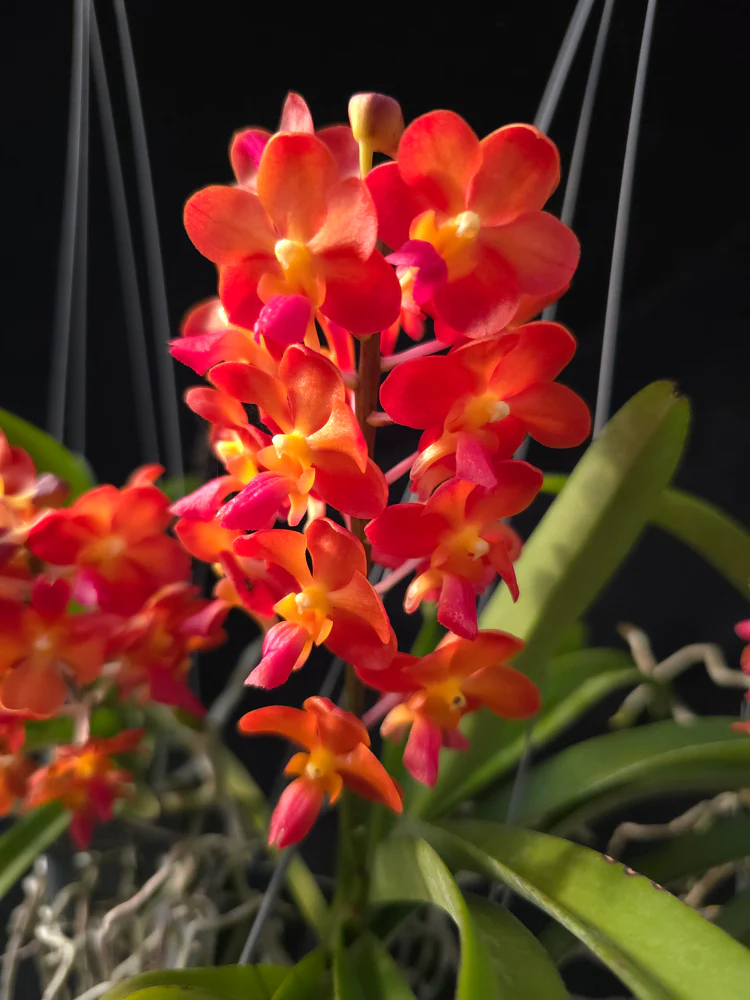
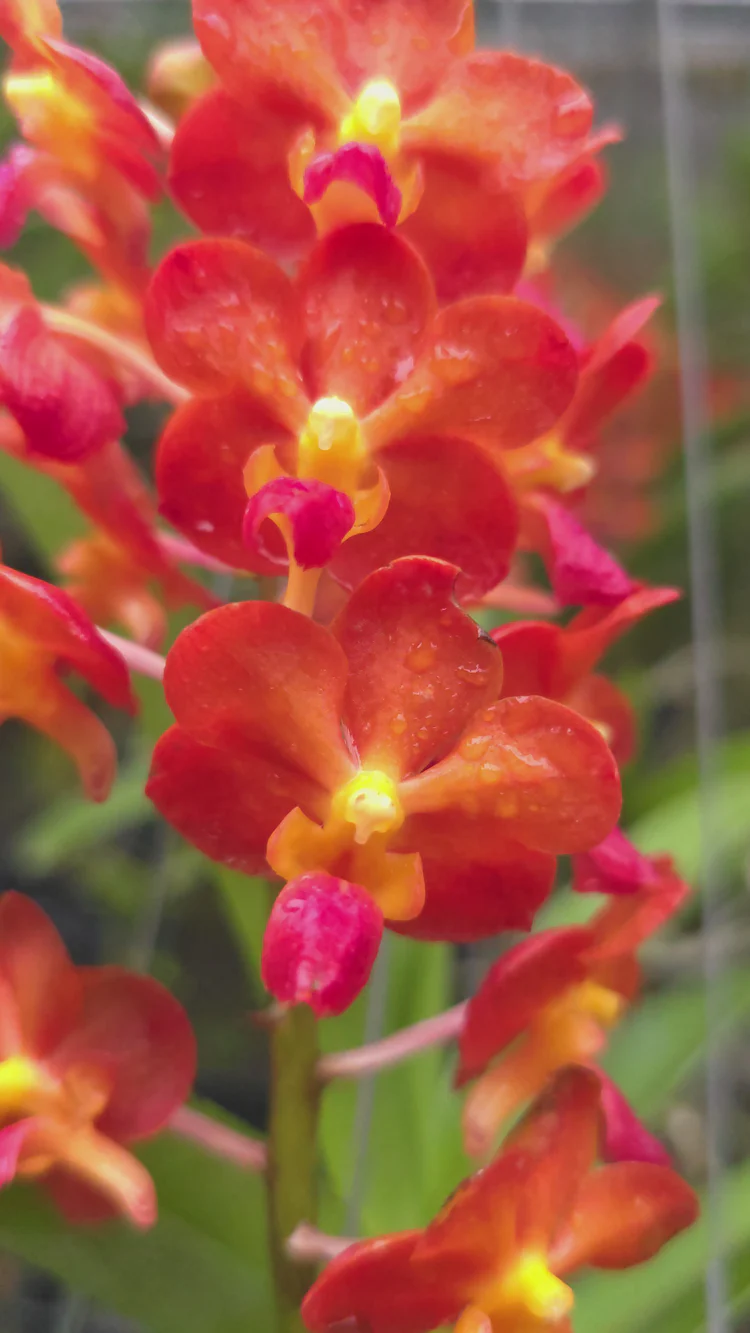
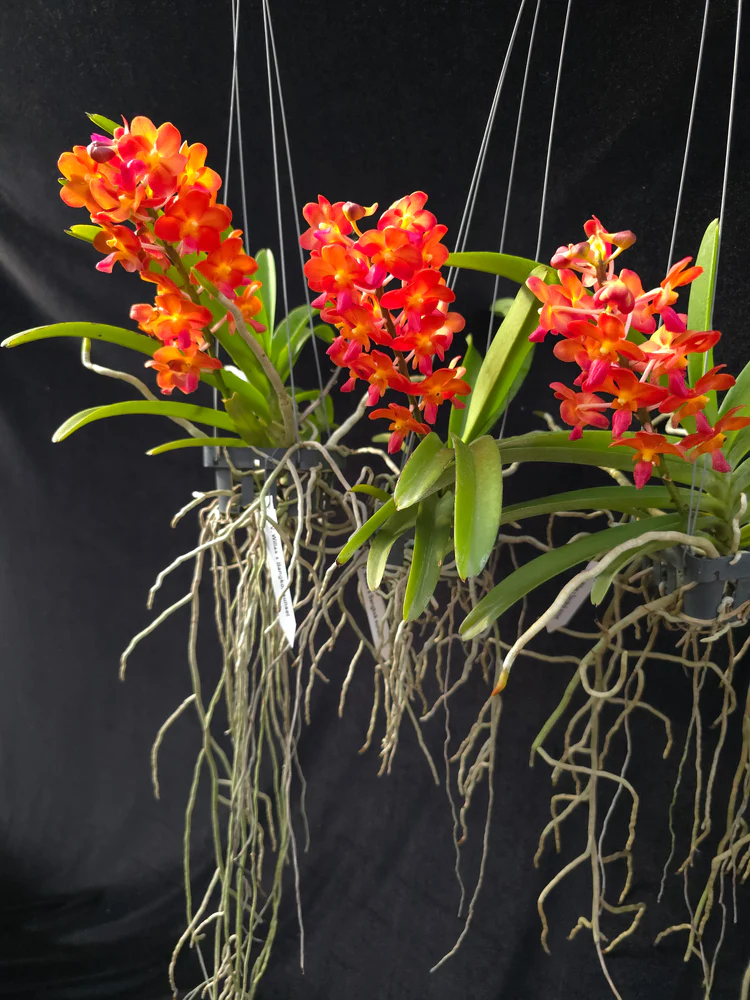
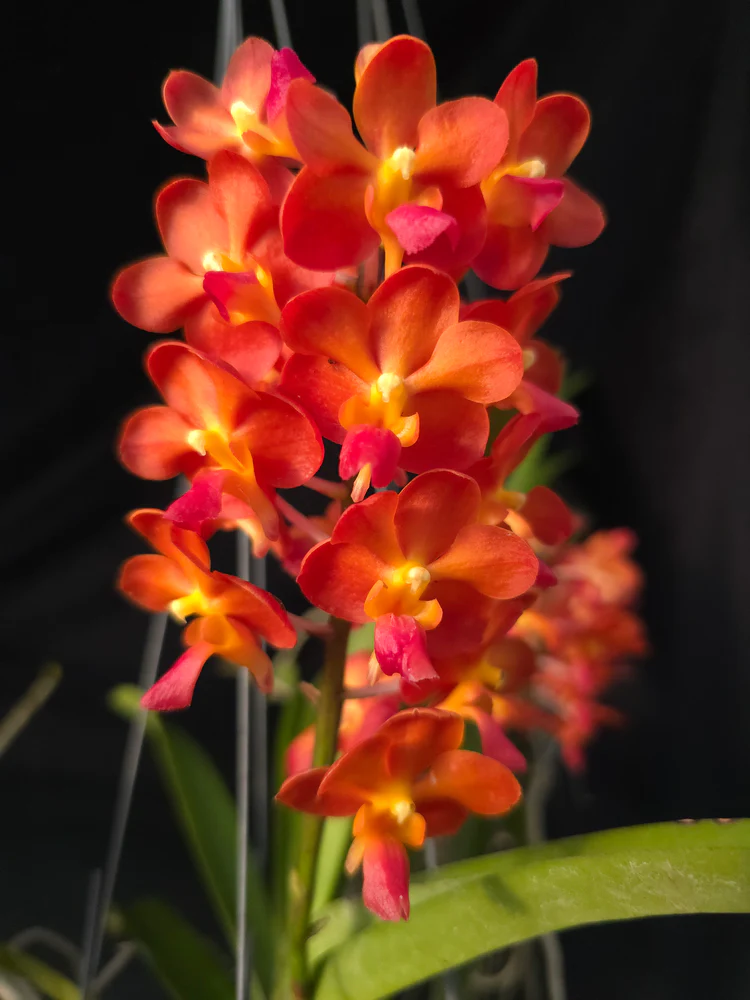
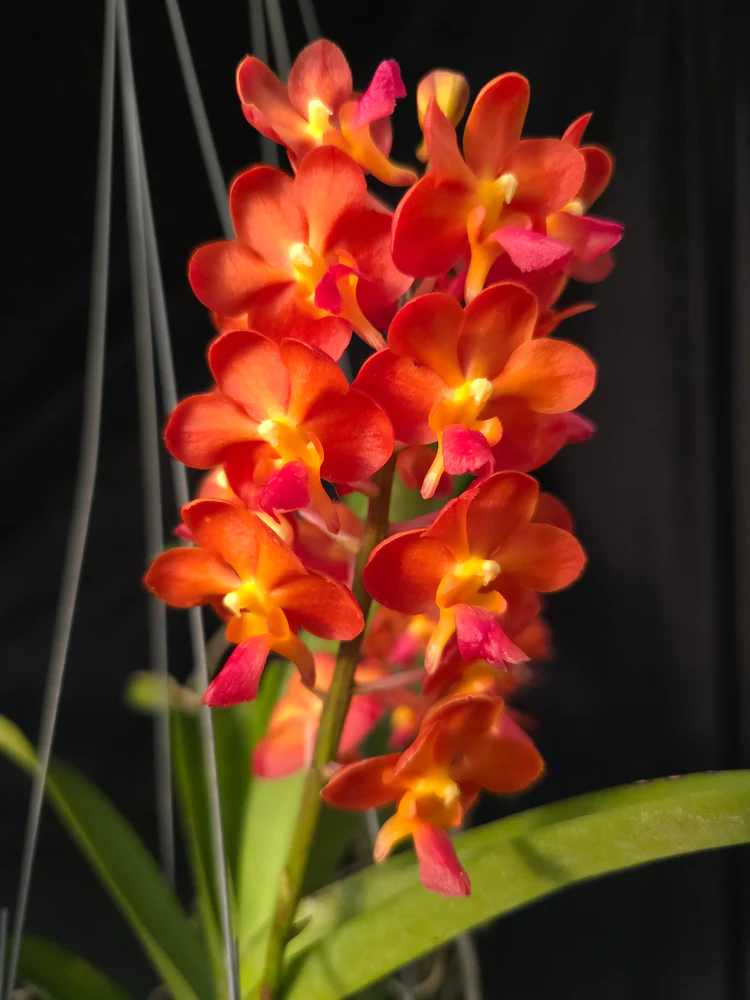
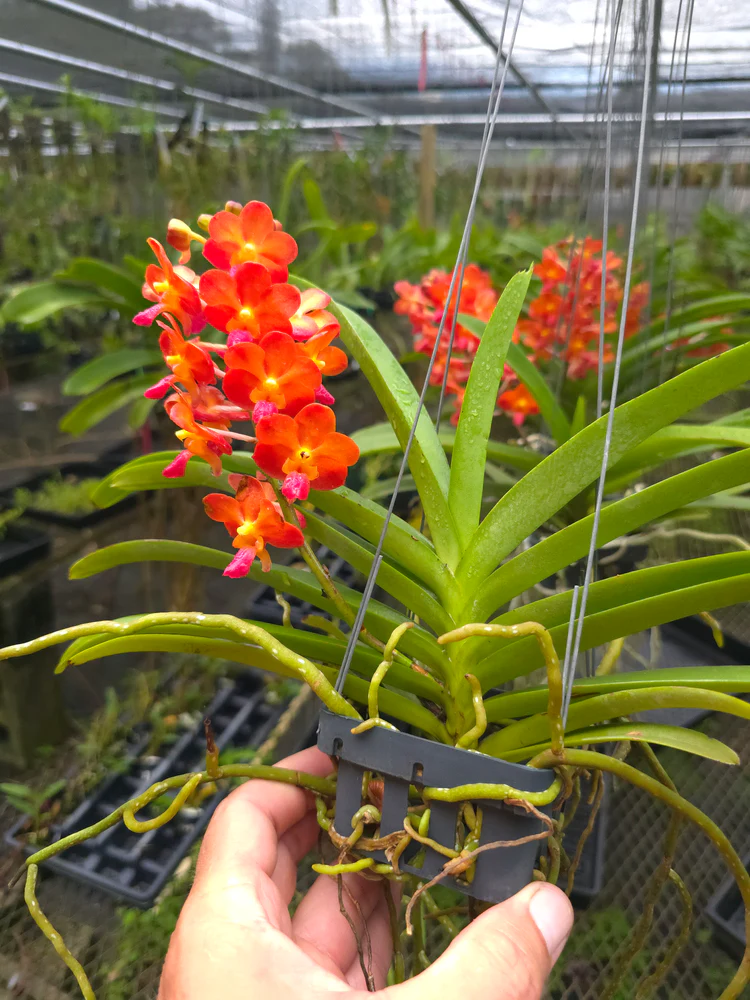
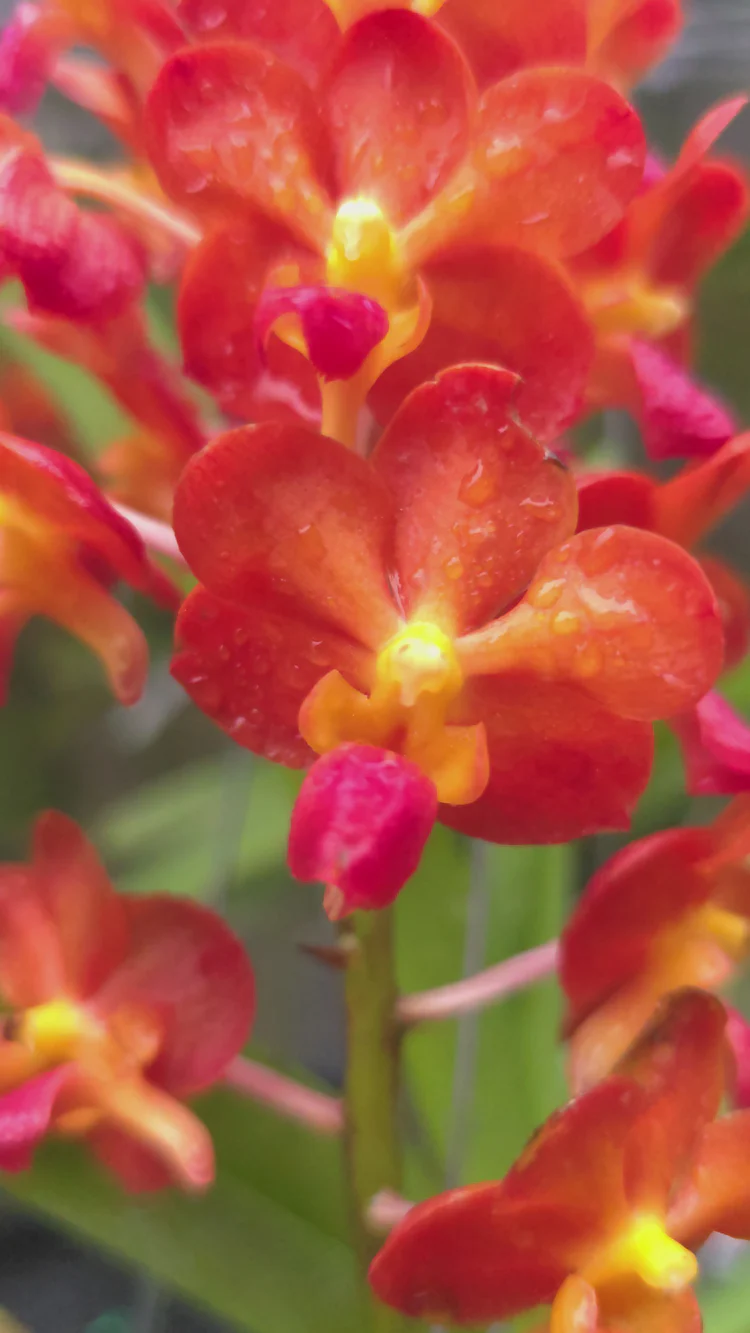
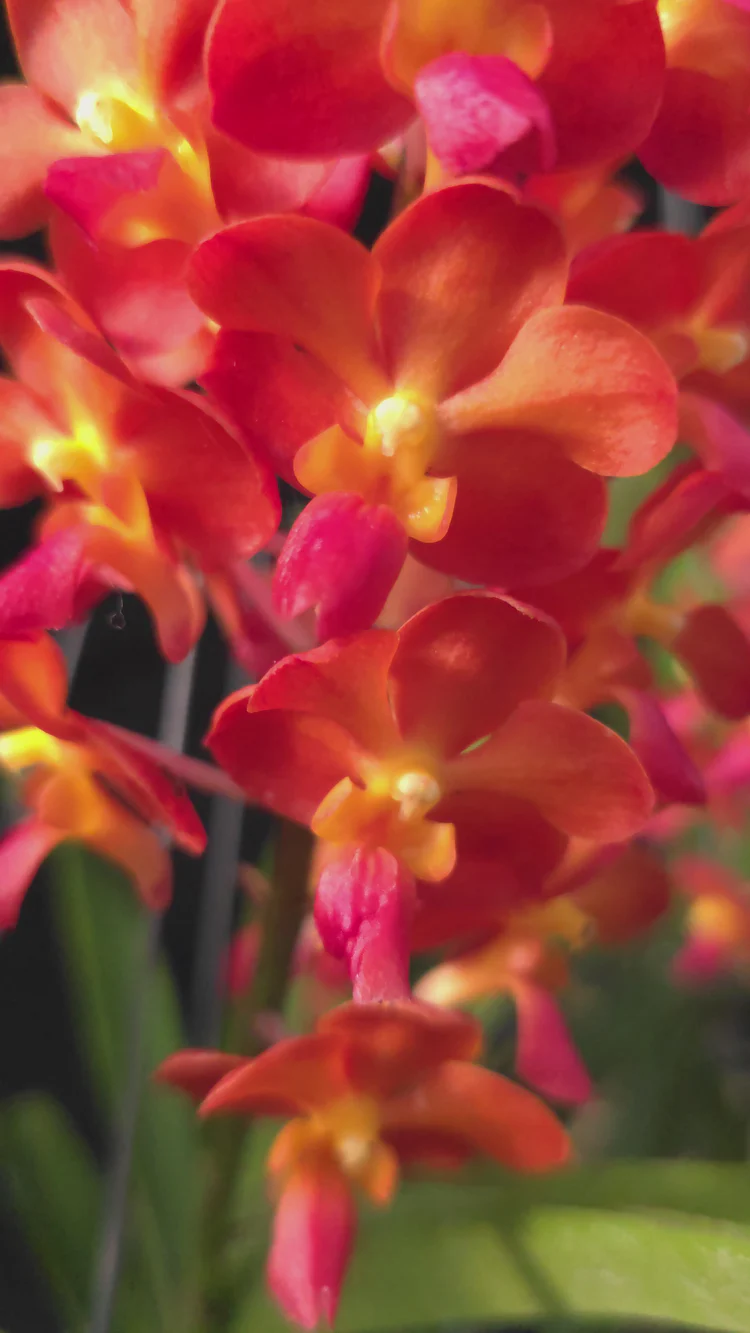

Vanda Willas x Bangkok Sunset
- 定価
-
$45.00 - 定価
-
$65.00 - 特価
-
$45.00









